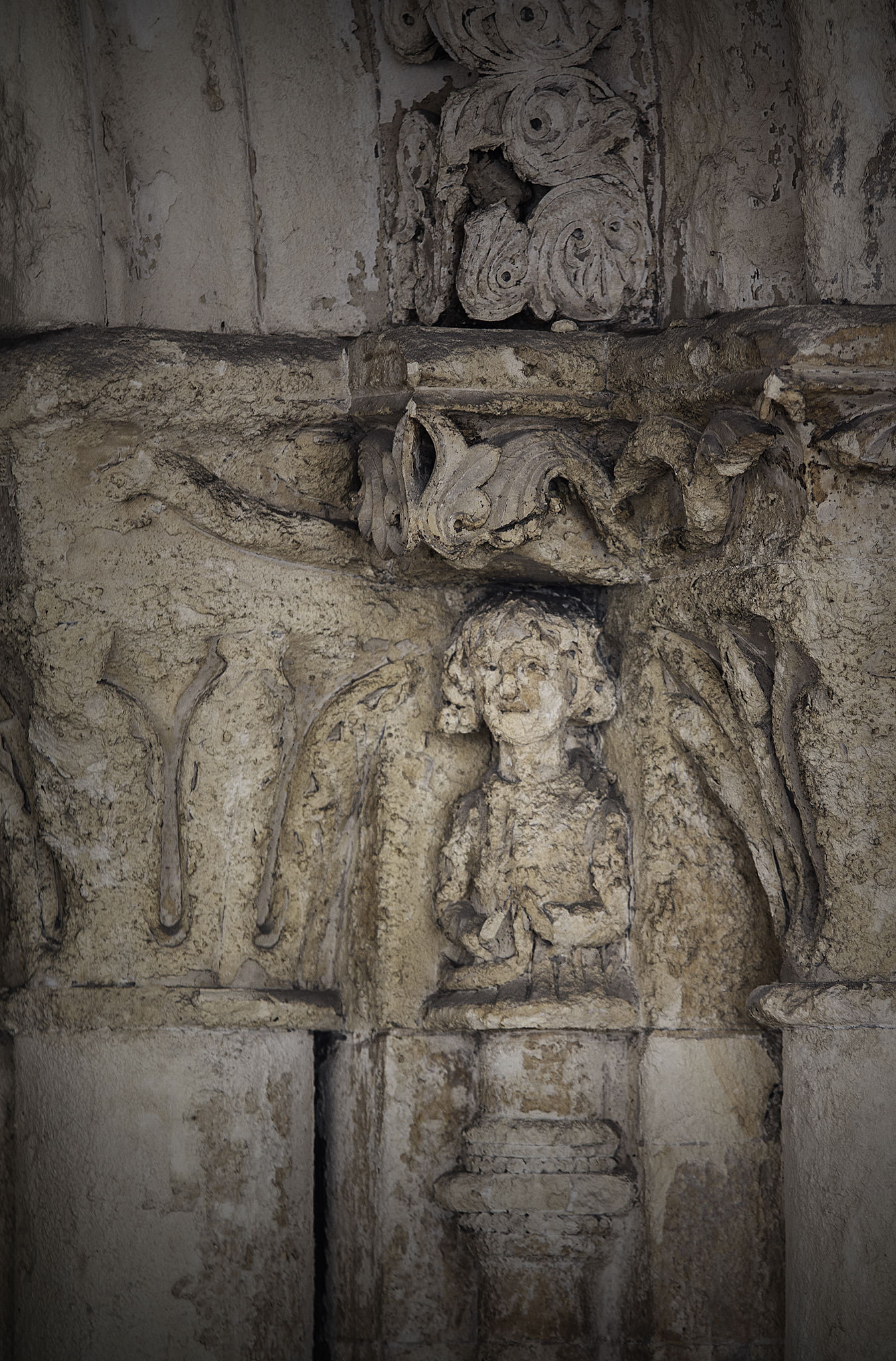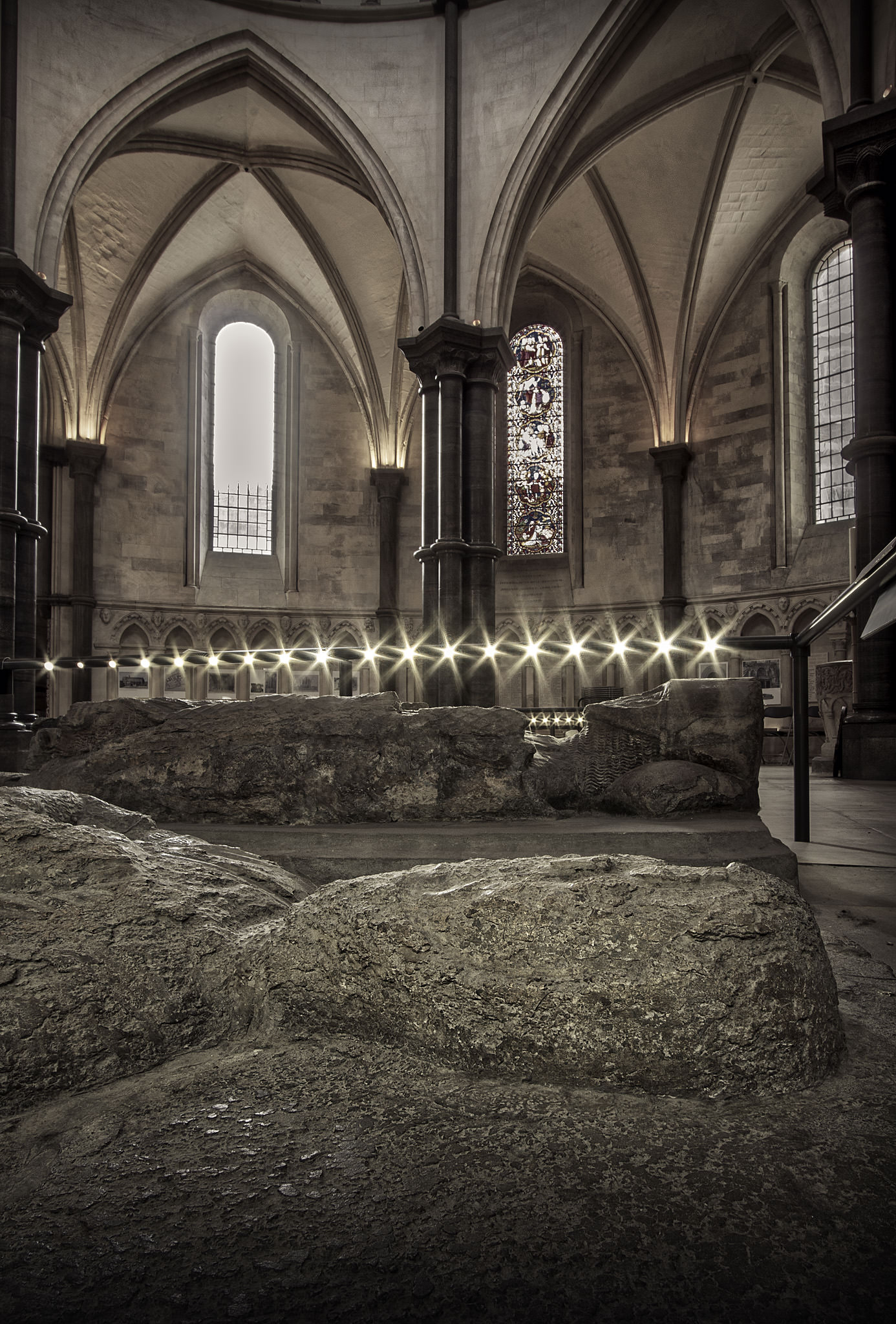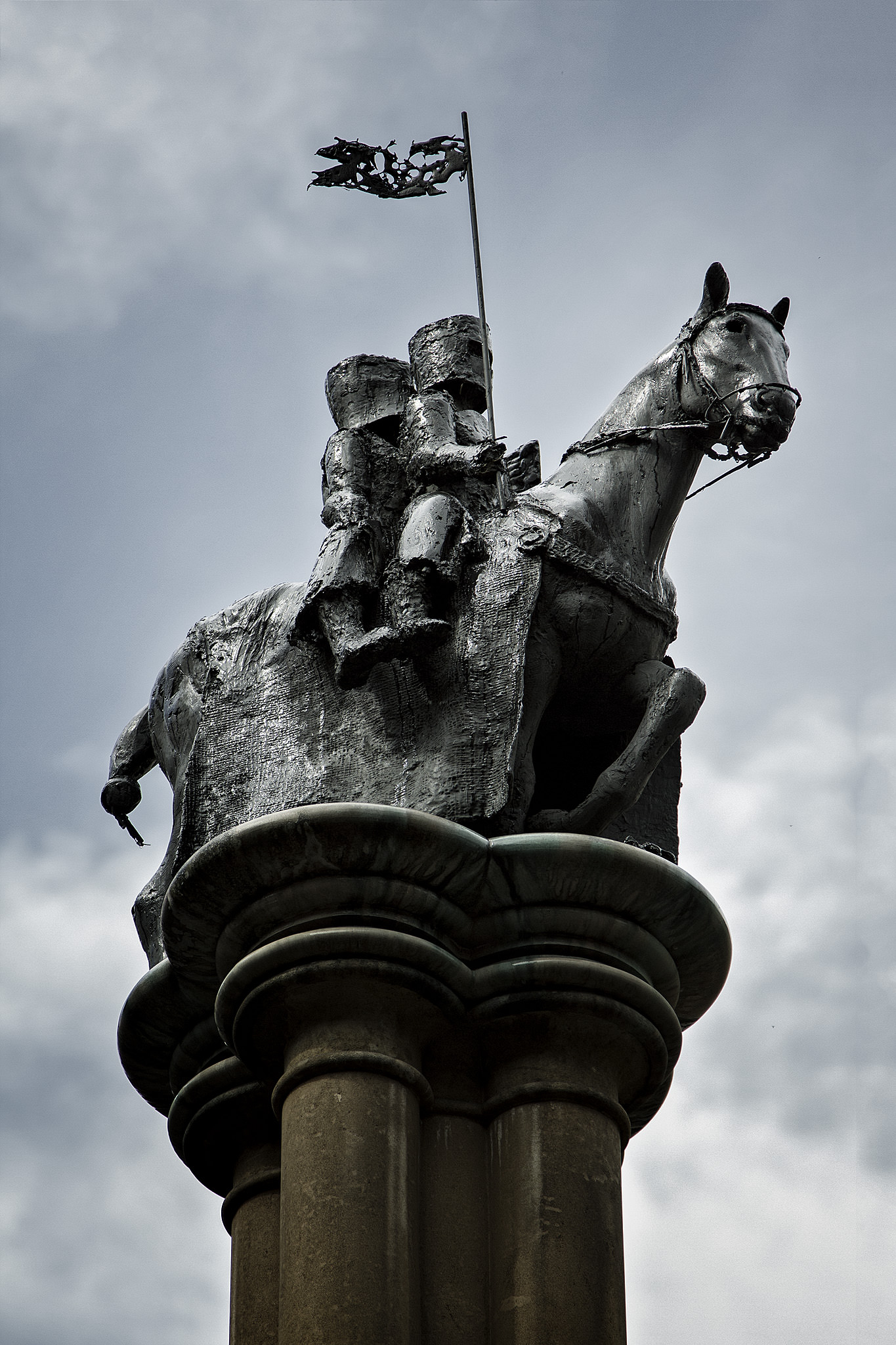Temple Church, London

The Order of the Knights Templar was founded in 1118, it was created to protect pilgrims on route to the Holy Land. The order grew and became very wealthy, creating monasteries across Europe. Temple Church is located between Fleet Street and the Thames in London. The church was consecrated in 1185.
The Templars in London were originally located at High Holborn, however this site came too small for the order and they moved their London headquarters to this larger complex. At this time they created not only the church but also monastic buildings, which included residences, and military training facilities. The compound was regularly visited by the King and by Legates of the Pope. The compound also served as a safety deposit bank.
Templar churches were round; these were modelled after the Church of the Holy Sepulchre in Jerusalem. Temple Church has been altered throughout its life, with the first remodelling done in the 13th Century. When William Marshal chose to be buried here, the church was enlarged to accommodate him.
William Marshall has become a famous medieval figure. He lived through the reign of four Kings and rose in the ranks from a younger son, to hold one of the most powerful offices in England, that of regent to the young King Henry III. He lived a fascinating life, which may never have been if King Stephen had been ruthless. William was as a child a hostage to the King for his fathers good behaviour. His father, John Marshall, was asked to surrender the castle at Newbury, which was under siege, or his son William, would die. He did not surrender. King Stephen did not go through with his threat and the young William survived.
After the destruction of the Knights Templar in 1307, the area came into the possession of the Crown. It was then given to the Knights Hospitaller, they later leased it to two colleges of lawyers. The property again reverted to the Crown at the time of the reformation, when Henry VIII abolished the Knights Hospitallars in England. The law connection continued however and the area became known as the Temple.
In 1608, the Crown made a deal with the lawyers that they could use the Temple area on condition that they maintained the church, and the master of the Temple. The Temple area survived the Great Fire of London. The church today is still financed by the Middle and Inner Temples, the two sets of barristers.
The effigies we see today have been moved from their original locations. The church was redesigned by Christopher Wren and it was damaged during World War II. It’s hard to tell which event caused more destruction to the medieval church but we do need to use our imagination some to visit the old Templar Church.






